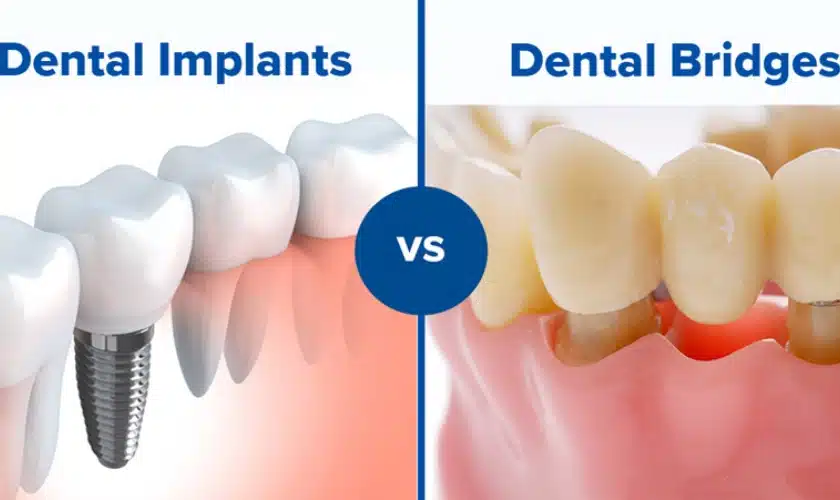Getting My Dental Sense To Work
Getting My Dental Sense To Work
Blog Article
Indicators on Dental Sense You Should Know
Table of ContentsThe smart Trick of Dental Sense That Nobody is DiscussingGetting My Dental Sense To WorkAll about Dental SenseNot known Details About Dental Sense
are medical tools operatively dental implanted into the jaw to recover an individual's capacity to eat or their look. They supply assistance for artificial (phony) teeth, such as crowns, bridges, or dentures. When a tooth is shed due to injury or disease, a person can experience complications such as rapid bone loss, malfunctioning speech, or adjustments to eating patterns that cause pain.Dental implant systems contain an oral implant body and oral implant abutment and might likewise include a joint fixation screw. Cosmetic dentistry services. The oral implant body is surgically inserted in the jawbone instead of the tooth's origin. The oral implant joint is generally affixed to the implant body by the abutment addiction screw and expands with gums into the mouth to sustain the connected fabricated teeth
(https://dentalsense1.carrd.co/)Framework of The Oral Implant System picking oral implants, talk to your dental service provider concerning the prospective advantages and dangers, and whether you are a prospect for the treatment. Things to consider: Your overall health is a crucial consider identifying whether you are a great prospect for oral implants, exactly how long it will take to recover, and the length of time the implant may stay in area.
Smoking cigarettes might influence the healing process and lower the long-term success of the implant. The recovery procedure for the dental implant body might take several months or longer, during which time you typically have a short-term abutment in place of the tooth. the dental implant procedure: Very carefully comply with the dental hygiene guidelines provided to you by your oral copyright.
An Unbiased View of Dental Sense
Implant failing can cause the requirement for one more procedure to deal with or change the dental implant system. Brings back the ability to chew Brings back cosmetic look Helps keep the jawbone from diminishing due to bone loss Maintains the wellness of the surrounding bone and periodontals Assists keep surrounding (nearby) teeth stable Boosts quality of life Damages to bordering natural teeth throughout dental implant positioning Injury to the surrounding cells during surgical procedure, such as sinus opening Injury throughout surgery (for instance, crack of surrounding jawbone) Insufficient function, such as seeming like the teeth do not bite together generally An experience that the tooth is loosened or twisting in position resulting from a joint screw loosening up Implant body failure (looseness of the dental implant body) as a result of systemic infection, which might be more most likely in patients with unchecked diabetes mellitus as a result of local infection in bone and periodontals supporting the dental implant body as a result of delayed healing, which may be more probable in individuals that smoke Difficulty cleaning up the gums around the implant, leading to poor dental health Without treatment periodontal disease Post-surgical tingling due to nerve impingement or damages Constantly inform health care providers and imaging technicians that you have dental implants before any kind of magnetic resonance imaging (MRI) or x-ray procedures.
FDA is not knowledgeable about any type of unfavorable occasions reported for MRI or x-ray treatments with dental implants. Dental implants systems are generally made from products that adhere to worldwide agreement requirements of the International Company for Standardization (ISO) or ASTM International. These criteria have details of what makes a safe product.

An oral implant is a framework that changes a missing tooth. With screw-like tools, the cosmetic surgeon inserts an implant into the jawbone, and it acts as a support for a synthetic tooth, called a crown.
The smart Trick of Dental Sense That Nobody is Talking About
Some individuals are not qualified for dental implant surgical treatment. It is for oral surgeons to run on people with: intense illnessuncontrollable metabolic diseasebone or soft cells condition or infectionIf these problems are settled, an individual can have the surgical treatment. In, dental cosmetic surgeons avoid operating individuals with: If people with any of the above go through look at more info oral implant surgery, there is a greater danger of the implant falling short.

Dental dental implant surgery is a tailored process. It's not the same for everybody. However the complying with offers a basic introduction of what you can anticipate your dental practitioner, dental surgeon, periodontist or prosthodontist to do: Position the dental implant operatively. Provide you time to recover. Affix the message and last crown, bridge or denture.
Next, your specialist will very carefully put the dental implant into your jaw. Ultimately, your specialist will certainly rearrange your periodontals and close the incision with stitches. If your dental implant is near the front of your mouth, your dental professional will make a short-term tooth for you to use until you heal. By doing this, you will not have a void in your smile while you recoup.
An Unbiased View of Dental Sense
Your company can inform you what to anticipate in your situation. During the recovery phase, your jawbone must fuse to the oral implant. This procedure, called osseointegration, is crucial for security and long-lasting success. This process can take anywhere from three to nine months. In many cases, it might take much longer.
Once your dental implant heals, your dental practitioner can affix the joint (small connector blog post) and your final restoration (crown, bridge or denture). This generally takes concerning one hour to complete and may require a 2nd small surgery. You shouldn't really feel any pain throughout your dental implant treatment due to the fact that your copyright will make use of medication to numb your gum tissues.
Report this page